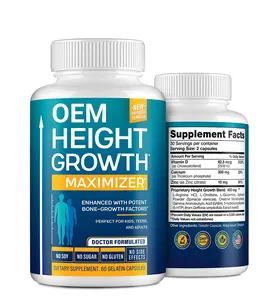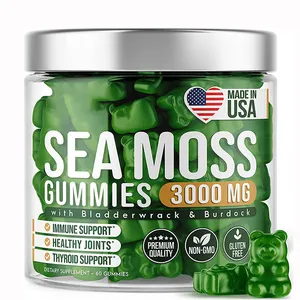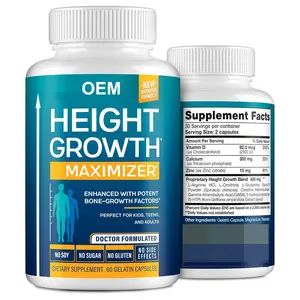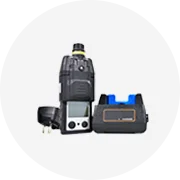Phổ biến trong ngành của bạn
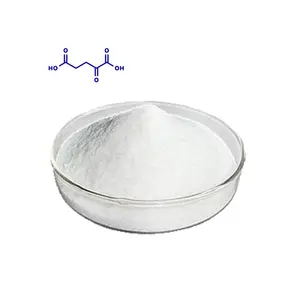





Chất lượng cao Nhà máy cung cấp CAS 328-50-7 alpha-ketoglutaric axit
10,00 US$ - 50,00 US$
Đơn hàng tối thiểu: 25 Kilogram







Nhà Máy Bán Hàng Trực Tiếp Chất Lượng Cao Và Giá Cả Tốt Đẹp Điều Chỉnh Axit Cas NO.5949-29-1 Axit Citric Khan Cấp Thực Phẩm Mẫu Miễn Phí
0,50 US$ - 1,00 US$
Đơn hàng tối thiểu: 1000 Kilogram







Mỹ phẩm lớp tinh khiết 99% axit lactic giá số lượng lớn nguyên axit lactic bột với mẫu miễn phí cho bán
5,00 US$ - 12,00 US$
Đơn hàng tối thiểu: 1 Kilogram







Cung cấp mẫu miễn phí hydroxycitric axit HCA 50% 60% Garcinia Cambogia chiết xuất bột
15,00 US$ - 40,00 US$
Đơn hàng tối thiểu: 1 Kilogram







Mẫu Miễn Phí Chiết Xuất Hạt Cà Phê Xanh Bột Xuất Khẩu Axit Chlorogenic 45%
12,00 US$ - 50,00 US$
Đơn hàng tối thiểu: 1 Kilogram






Haccp Sản Phẩm Mới Chiết Xuất Hạt Cà Phê Xanh Mẫu Miễn Phí Thực Phẩm Axit Chlorogenic
10,00 US$ - 100,00 US$
Đơn hàng tối thiểu: 10 Kilogram






Rainwood Mẫu Miễn Phí Lonicera Japonica Hoa Chiết Xuất Kim Ngân Hoa Chiết Xuất Chlorogenic Acid
15,00 US$ - 45,00 US$
Đơn hàng tối thiểu: 1 Kilogram






Mẫu miễn phí số lượng lớn tinh khiết màu xanh lá cây chiết xuất hạt cà phê bột axit chlorogenic
Sẵn sàng vận chuyển
9,00 US$ - 12,00 US$
Đơn hàng tối thiểu: 1 Kilogram
Vận chuyển mỗi chiếc: 45,00 US$






Miễn phí mẫu màu xanh lá cây coffeee đậu chiết xuất axit chlorogenic 50%
15,00 US$ - 90,00 US$
Đơn hàng tối thiểu: 1 Kilogram






Bán buôn mẫu miễn phí màu xanh lá cây chiết xuất hạt cà phê 50% axit chlorogenic
12,00 US$ - 15,00 US$
Đơn hàng tối thiểu: 1 Kilogram






Nhãn hiệu riêng Hot Bán số lượng lớn axit chlorogenic 50% màu xanh lá cây chiết xuất hạt cà phê bột mẫu miễn phí màu xanh lá cây chiết xuất hạt cà phê
13,60 US$ - 26,50 US$
Đơn hàng tối thiểu: 1 Kilogram
Các tìm kiếm liên quan:
bán chạy nhất axit chlorogenicgiá tốt nhất axit chlorogenicđộ tinh khiết cao chlorogenic acid10% axit chlorogenicaxit chlorogenic tinh khiết45% axit chlorogenic5% axit chlorogenicnhà cung cấp 50% axit chlorogenicgiá axit chlorogenicsản xuất cung cấp axit chlorogenicaxit chlorogenic2020 axit chlorogenicaxit chlorogenic 50%axit chlorogenic 95%50% 80% chlorogenic acid






Sự lựa chọn đầu tiên của màu xanh lá cây chiết xuất hạt cà phê chất lượng tốt nhất đảm bảo axit chlorogenic 20/50% mẫu miễn phí cấp thực phẩm
16,00 US$ - 45,00 US$
Đơn hàng tối thiểu: 1 Kilogram





Bột Chiết Xuất Hạt Cà Phê Xanh Mẫu Miễn Phí Axit Chlorogenic Hòa Tan Trong Nước 10%-98%
15,00 US$ - 58,00 US$
Đơn hàng tối thiểu: 1 Kilogram






Mẫu miễn phí số lượng lớn tinh khiết màu xanh lá cây chiết xuất hạt cà phê bột axit chlorogenic
30,00 US$ - 40,00 US$
Đơn hàng tối thiểu: 1 Kilogram






Bột Chiết Xuất Hạt Cà Phê Xanh/Bột Chiết Xuất Hạt Cà Phê Xanh Axit Chlorogenic/Bột Chiết Xuất Hạt Cà Phê Xanh Nguyên Chất
10,00 US$ - 50,00 US$
Đơn hàng tối thiểu: 1 Kilogram






Chiết Xuất Atisô Chất Lượng Cao 5% Cynarin UV, Axit Chlorogenic
10,00 US$ - 100,00 US$
Đơn hàng tối thiểu: 1 Kilogram






Nhà máy số lượng lớn giá tinh khiết màu xanh lá cây chiết xuất hạt cà phê bột 50% axit chlorogenic
36,00 US$ - 45,00 US$
Đơn hàng tối thiểu: 1 Kilogram






Giá Xuất Xưởng Axit Chlorogenic 98% Chiết Xuất Eucommia Ulmoides Axit Chlorogenic
25,00 US$ - 99,00 US$
Đơn hàng tối thiểu: 1 Kilogram






Giá tốt nhất lonicera Japonica chiết xuất cây kim ngân hoa chiết xuất lonicera Japonica bột với axit chlorogenic
26,00 US$ - 32,00 US$
Đơn hàng tối thiểu: 1 Kilogram






Mẫu miễn phí chất lượng cao 100% hữu cơ eucommia Bark extract bột 10:1 eucommia ulmoides lá chiết xuất 98% axit chlorogenic
6,80 US$ - 29,00 US$
Đơn hàng tối thiểu: 1 Kilogram






Haoze Hot Bán màu xanh lá cây chiết xuất hạt cà phê 50% axit chlorogenic
15,00 US$ - 20,00 US$
Đơn hàng tối thiểu: 1 Kilogram






Mẫu Miễn Phí Bột Chiết Xuất Hạt Cà Phê Xanh; Axit Chlorogenic; Giá Axit Chlorogenic;
20,00 US$ - 500,00 US$
Đơn hàng tối thiểu: 1 Kilogram






Tinh Khiết Tự Nhiên Lonicerae Flos Chiết Xuất Bột Chlorogenic Acid 95%
15,00 US$ - 23,00 US$
Đơn hàng tối thiểu: 1 Kilogram






Chất lượng cao màu xanh lá cây chiết xuất hạt cà phê powder10 %- 50% axit chlorogenic với giá tốt nhất
8,00 US$ - 25,00 US$
Đơn hàng tối thiểu: 1 Kilogram






Trọng lượng giảm cân axit chlorogenic 50% màu xanh lá cây chiết xuất hạt cà phê
Sẵn sàng vận chuyển
49,00 US$ - 55,00 US$
Đơn hàng tối thiểu: 10 Kilogram
Vận chuyển mỗi chiếc: 29,30 US$






Axit Chlorogenic Chất Lượng Cao, Axit Chlorogenic Với Số Lượng Lớn Cas 331-39-5
10,00 US$ - 12,00 US$
Đơn hàng tối thiểu: 1 Kilogram
Vận chuyển mỗi chiếc: 27,26 US$






Novenzyme bán buôn GMP tiêu chuẩn tinh khiết màu xanh lá cây chiết xuất hạt cà phê bột axit chlorogenic
15,00 US$ - 100,00 US$
Đơn hàng tối thiểu: 1 Kilogram






Giá bán buôn Trọng lượng giảm cân màu xanh lá cây chiết xuất hạt cà phê bột 50% 98% axit chlorogenic
8,00 US$ - 18,00 US$
Đơn hàng tối thiểu: 1 Kilogram
Vận chuyển mỗi chiếc: 30,89 US$






Axit chlorogenic 5-98% 45% axit chlorogenic tiêu chuẩn hóa cho 45% axit chlorogenic
65,00 US$ - 115,00 US$
Đơn hàng tối thiểu: 1 Kilogram
Vận chuyển mỗi chiếc: 58,00 US$





Bột Axit Chlorogenic 50% Chiết Xuất Hạt Cà Phê Xanh Giảm Cân Tự Nhiên
40,00 US$ - 45,00 US$
Đơn hàng tối thiểu: 1 Kilogram






Cung Cấp Mẫu Miễn Phí Halal Green Coffee Bean Extract 50% Bột Axit Chlorogenic
15,00 US$ - 52,00 US$
Đơn hàng tối thiểu: 1 Kilogram






Mẫu Miễn Phí Bột Cà Phê Xanh Chiết Xuất Cho Giảm Cân
20,00 US$ - 120,00 US$
Đơn hàng tối thiểu: 1 Kilogram






Bột Axit Chlorogenic 98% Hữu Cơ Giá Tốt Nhất Halal Mẫu Không Axit Chlorogenic
880,00 US$ - 897,00 US$
Đơn hàng tối thiểu: 1 Kilogram
Vận chuyển mỗi chiếc: 215,00 US$






Mẫu Miễn Phí Eucommia Ulmoides Leaf Bark Chiết Xuất Bột Axit Chlorogenic Eucommia Chiết Xuất
Sẵn sàng vận chuyển
9,00 US$ - 15,00 US$
Đơn hàng tối thiểu: 1 Kilogram
Vận chuyển mỗi chiếc: 82,00 US$






Bột Axit Chlorogenic Cà Phê Xanh 100% Nguyên Chất Tự Nhiên 50% Chiết Xuất Hạt Cà Phê Xanh
8,00 US$ - 38,00 US$
Đơn hàng tối thiểu: 1 Kilogram






Sản phẩm hữu cơ bán sỉ cấp thực phẩm tốt nhất số lượng lớn tinh khiết hữu cơ cây kim ngân hoa chiết xuất 98% chlorogenic Bột axit với mẫu miễn phí và giá rẻ
10,00 US$ - 12,00 US$
Đơn hàng tối thiểu: 25 Kilogram






Giá Số Lượng Lớn Chất Lượng Cao 5% Chlorogenic Acid Honeysuckle Hoa Chiết Xuất Bột
25,00 US$ - 60,00 US$
Đơn hàng tối thiểu: 1 Kilogram






Mẫu miễn phí tự nhiên cây kim ngân hoa chiết xuất thực vật thảo dược sweetberry hoa cây kim ngân hoa chiết xuất bột
10,00 US$ - 25,00 US$
Đơn hàng tối thiểu: 1 Kilogram






Cung cấp màu xanh lá cây chiết xuất hạt cà phê bột Chất lượng cao miễn phí mẫu màu xanh lá cây chiết xuất hạt cà phê bột trên bán
14,50 US$ - 16,50 US$
Đơn hàng tối thiểu: 1 Kilogram
Các danh mục hàng đầu
Giới thiệu về mẫu miễn phí axit chlorogenic
Tìm kiếm mẫu miễn phí axit chlorogenic. trên Alibaba.com và duyệt qua nhiều lựa chọn về các nhà cung cấp tuyệt vời. Tiết kiệm tiền khi dự trữ một thành phần để sử dụng trong một số mặt hàng thực phẩm khác nhau. Phần lớn mẫu miễn phí axit chlorogenic. có dạng bột dễ hòa tan và dễ trộn với các thành phần khác. Sử dụng như một chất thay thế thơm ngon, không chứa caffein cho cà phê hoặc để làm một số loại thuốc thảo dược. Các nhà sản xuất thực phẩm và công ty dược phẩm có thể hưởng lợi từ việc sử dụng thành phần hoàn toàn tự nhiên này.
Tất cả mẫu miễn phí axit chlorogenic. có mức độ tinh khiết rất cao, giúp sản phẩm cuối cùng không có các chất gây ô nhiễm tiềm ẩn. Bột màu trắng giữ được vẻ trung tính khi trộn các thành phần và sẽ không ảnh hưởng đến màu sắc. Các chất chiết xuất sẫm màu hơn cũng có sẵn và có thể mang lại bóng râm bổ sung trong thành phần sản phẩm cuối cùng. Khi uống vào cơ thể, bột inulin có trong sản phẩm có thể có tác dụng lợi khuẩn giúp cải thiện sức khỏe hệ tiêu hóa theo thời gian.
mẫu miễn phí axit chlorogenic được bán trên Alibaba.com tuân thủ các tiêu chuẩn cấp thực phẩm và cấp y tế để đảm bảo an toàn cho khách hàng. Các nhà cung cấp thường sẽ đóng gói sản phẩm trong túi hút chân không để bảo quản độ tươi và chất lượng. Đặc biệt những lô hàng lớn thường được đựng trong thùng phuy dễ vận chuyển. Hầu hết các chất chiết xuất sẽ mang lại thêm hương vị ngọt ngào để tạo cho công thức một hương vị dễ chịu hơn.
Duyệt qua mẫu miễn phí axit chlorogenic. trên Alibaba.com và tận hưởng chi phí thấp của một thành phần chính quan trọng được sử dụng trong các loại dược phẩm và đồ uống tốt cho sức khỏe. Cho dù người tiêu dùng cần cải thiện sức khỏe hệ tiêu hóa hoặc tạo ra đồ uống có hương vị cà phê mà không có caffeine, thì vẫn có rất nhiều lựa chọn có sẵn. Mua sắm xung quanh và tìm các nhà cung cấp tốt nhất có thể giao hàng với bất kỳ số lượng nào cần thiết.
Tất cả mẫu miễn phí axit chlorogenic. có mức độ tinh khiết rất cao, giúp sản phẩm cuối cùng không có các chất gây ô nhiễm tiềm ẩn. Bột màu trắng giữ được vẻ trung tính khi trộn các thành phần và sẽ không ảnh hưởng đến màu sắc. Các chất chiết xuất sẫm màu hơn cũng có sẵn và có thể mang lại bóng râm bổ sung trong thành phần sản phẩm cuối cùng. Khi uống vào cơ thể, bột inulin có trong sản phẩm có thể có tác dụng lợi khuẩn giúp cải thiện sức khỏe hệ tiêu hóa theo thời gian.
mẫu miễn phí axit chlorogenic được bán trên Alibaba.com tuân thủ các tiêu chuẩn cấp thực phẩm và cấp y tế để đảm bảo an toàn cho khách hàng. Các nhà cung cấp thường sẽ đóng gói sản phẩm trong túi hút chân không để bảo quản độ tươi và chất lượng. Đặc biệt những lô hàng lớn thường được đựng trong thùng phuy dễ vận chuyển. Hầu hết các chất chiết xuất sẽ mang lại thêm hương vị ngọt ngào để tạo cho công thức một hương vị dễ chịu hơn.
Duyệt qua mẫu miễn phí axit chlorogenic. trên Alibaba.com và tận hưởng chi phí thấp của một thành phần chính quan trọng được sử dụng trong các loại dược phẩm và đồ uống tốt cho sức khỏe. Cho dù người tiêu dùng cần cải thiện sức khỏe hệ tiêu hóa hoặc tạo ra đồ uống có hương vị cà phê mà không có caffeine, thì vẫn có rất nhiều lựa chọn có sẵn. Mua sắm xung quanh và tìm các nhà cung cấp tốt nhất có thể giao hàng với bất kỳ số lượng nào cần thiết.
